.jpg)
Spectra
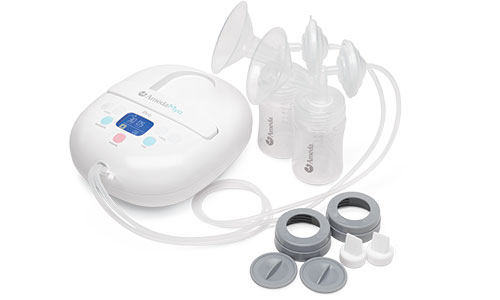
Ameda
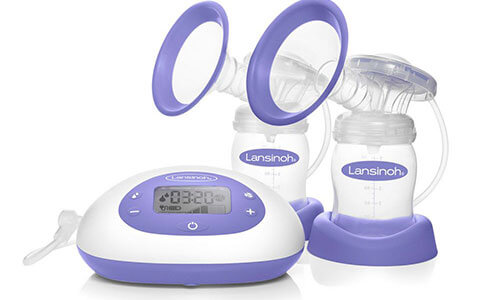
Lansinoh
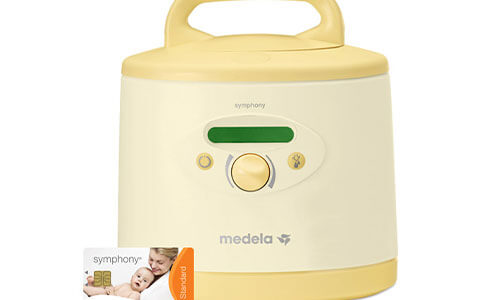
Medela
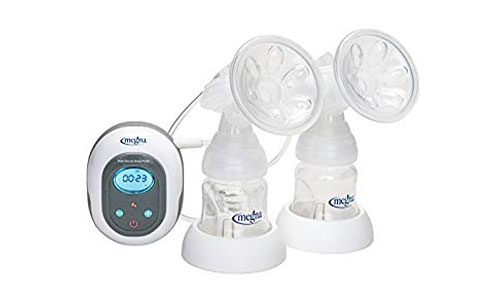
Megna
You may be eligible for an insurance-covered breast pump. And we may be able to help!
We are contracted with most major health insurance plans in the state of Maryland.
Getting Your Breast Pump is as Easy as 1-2-3
1. Complete the secure insurance form
We'll verify your insurance, check for any deductibles and/or co-pays, and let you know when to expect your pump!
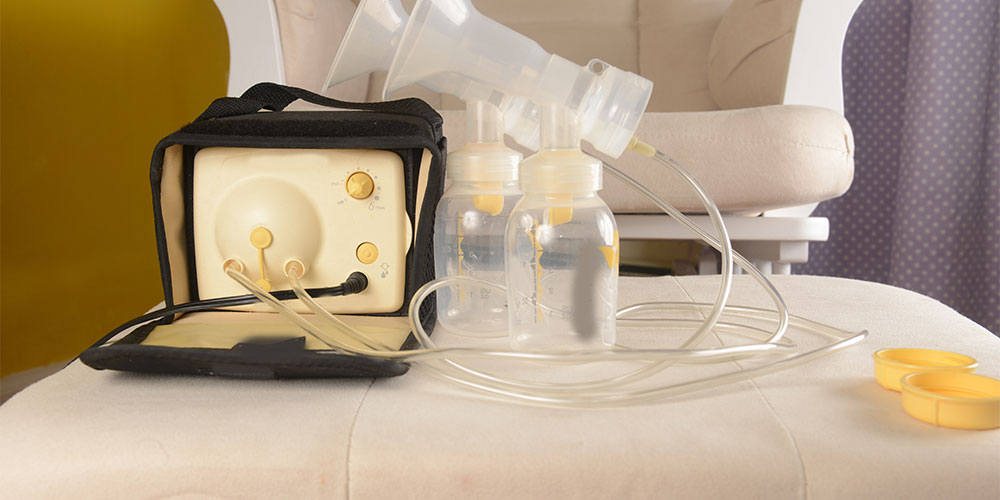
Breast Pump FAQs
What is a breast pump?
A breast pump is a device designed to extract milk from a lactating person's breasts. It is commonly used by breastfeeding individuals who want to express and store breast milk for later use or for those who are unable to directly breastfeed their babies. Breast pumps come in various types and sizes, but they all work by creating a vacuum or suction effect to stimulate milk flow and draw milk from the breasts.
Why would I need a breast pump?
Breast pumps serve several purposes. They can help maintain milk supply by ensuring regular milk removal from the breasts, especially if you need to be away from your baby for an extended period. Breast pumps are also helpful in relieving breast engorgement, a condition where the breasts become overly full and uncomfortable. Additionally, breast pumps allow you to store breast milk, providing a convenient way for others to feed your baby or for you to have a supply of milk when you're unavailable or after returning to work.
How do breast pumps work?
Breast pumps work by creating a suction or vacuum that mimics the action of a baby suckling at the breast. When you place the breast pump flanges over your breasts, the suction gently draws the nipple into the tunnel, stimulating milk let-down and flow. The milk is then collected in a container attached to the pump. Breast pumps typically have adjustable suction levels and cycle speeds, allowing you to customize the pumping experience to match your comfort and mimic your baby's nursing pattern.
What are the different types of breast pumps available?
There are three main types of breast pumps: manual breast pumps, electric breast pumps, and hospital-grade breast pumps. Manual breast pumps are operated by hand and require you to manually pump the handle to create suction. Electric breast pumps are powered by electricity or batteries and automatically generate suction, making them more convenient and efficient. Hospital-grade breast pumps are high-powered electric pumps typically used in hospitals or for those with specific breastfeeding needs, such as premature infants or low milk supply.
Are manual breast pumps effective?
Yes, manual breast pumps can be effective for many individuals. While they require manual pumping action, they are affordable, portable, and easy to use. Manual pumps are particularly useful for occasional expressing or for situations where you have limited access to electricity or batteries. While they may not be as fast or efficient as electric pumps, many breastfeeding parents find them sufficient for their needs. It's important to choose a manual pump with a comfortable handle and a good seal to ensure effective milk extraction.
Are electric breast pumps better than manual ones?
Electric breast pumps offer several advantages over manual pumps. They are more convenient and efficient since they automatically generate suction, mimicking a baby's nursing pattern. Electric pumps can allow for faster and more comfortable expressing sessions, which can be especially beneficial if you need to pump frequently or have a high milk supply. They also offer adjustable suction levels and cycle speeds, allowing you to find the settings that work best for your comfort and milk flow. However, electric breast pumps tend to be pricier and less portable than manual pumps. It's important to consider your specific needs and preferences when choosing between manual and electric pumps.
What is a double electric breast pump?
A double electric breast pump is a type of electric pump that allows you to pump both breasts simultaneously. This can help you save time and stimulate milk production effectively. Double pumping has been shown to increase milk production and provide better milk drainage from the breasts compared to single pumping. It is a popular choice for those who need to express milk regularly or have a limited amount of time for pumping sessions.
How often should I use a breast pump?
The frequency of breast pumping depends on your individual circumstances and needs. If you're exclusively pumping, it is generally recommended to pump at least 8-12 times in a 24-hour period to establish and maintain milk supply. If you're pumping to supplement breastfeeding or to build a milk stash, you can pump once or twice a day. However, it's important to find a pumping schedule that works for you and your baby's feeding needs. Regular and consistent pumping sessions are key to maintaining milk production and ensuring a sufficient milk supply. Talk with your doctor or lactation consultant to determine what is best for you and your baby.
When is the best time to start using a breast pump?
The best time to start using a breast pump depends on your specific circumstances and goals. Some individuals may choose to start pumping shortly after birth to establish a milk supply, while others may wait a few weeks until breastfeeding is well-established. It's generally recommended to wait until breastfeeding is established and your baby has a good latch and feeding routine before introducing a breast pump. Consulting with a lactation consultant or healthcare provider can help you determine the best time to start using a breast pump based on your individual situation.
How long should I pump during each session?
The duration of each pumping session may vary, but a typical guideline is to pump for about 15-20 minutes per breast. However, this can vary depending on your milk flow, comfort level, and the type of pump you are using. Some individuals may find that they can express an adequate amount of milk in a shorter time, while others may need to pump for longer periods. It's important to pay attention to your body's cues and adjust the pumping duration based on your comfort and milk flow.
How do I choose the right breast pump size?
Choosing the right breast pump size is crucial for comfortable and effective pumping. Most breast pumps come with different sizes of flanges, which are funnel-shaped parts that fit over your breasts. The flange size should allow your nipple to move freely without rubbing against the sides. If your nipples are rubbing or experiencing discomfort, it may indicate that the flange size is too small. On the other hand, if there is excessive space around the nipple, the flange size may be too large. It's recommended to consult with a lactation consultant or try different flange sizes to find the one that fits you best.
How do I clean and sterilize my breast pump?
Proper cleaning and sterilization of your breast pump components are essential for maintaining hygiene and preventing bacterial growth. After each use, disassemble the pump parts and wash them in warm, soapy water. Use a bottle brush to clean hard-to-reach areas and rinse all parts thoroughly. Some breast pump parts can be sterilized using steam or boiling water, following the manufacturer's instructions. It's important to let all the parts air dry on a clean towel before reassembling and storing them. Regular cleaning and sterilization will help ensure the safety and integrity of your breast pump equipment.
Can I share a breast pump with someone else?
It is generally not recommended to share a breast pump with someone else unless it is a hospital-grade pump designed for multiple users. Breast pumps that have an open system, where milk can come into contact with the pump's motor or internal parts, pose a risk of cross-contamination. Sharing a personal breast pump may introduce bacteria or viruses that can harm both the milk recipient and the lactating person. If you need to borrow or lend a breast pump, it's best to use a closed system pump or obtain new pump parts to ensure hygiene and safety.
How can I increase my milk supply using a breast pump?
There are several strategies you can try to increase your milk supply using a breast pump. First, ensure that you are pumping frequently, at least 8-12 times in a 24-hour period. Double pumping, where you pump both breasts simultaneously, can help stimulate milk production effectively. Massaging and applying warm compresses to the breasts before pumping can also encourage milk let-down and flow. It's important to create a comfortable and relaxing environment while pumping, as stress can inhibit milk production. Additionally, working with a lactation consultant can provide personalized guidance and support to help boost your milk supply.
Can I pump directly into bottles for feeding?
Yes, many breast pumps are designed to allow you to pump milk directly into bottles that can be used for feeding. This eliminates the need for transferring milk from storage containers to feeding bottles, saving time and minimizing milk handling. When choosing a breast pump, ensure that it is compatible with the bottles you plan to use for feeding. It's important to follow proper hygiene practices, such as washing and sterilizing the bottles and pump parts before each use, to maintain the safety and integrity of the milk.
Can I store breast milk in the fridge or freezer?
Yes, breast milk can be safely stored in the fridge or freezer for future use. Freshly expressed breast milk can be stored in the back of the refrigerator for up to 4-5 days at a temperature of 39°F (4°C) or lower. If you want to store breast milk for a longer period, it can be frozen. In a standard freezer compartment, breast milk can be stored for about 3-6 months, while in a deep freezer or chest freezer, it can be stored for up to 12 months. It's important to use clean storage containers and label them with the date to ensure proper rotation of the milk.
How should I thaw frozen breast milk?
When thawing frozen breast milk, it's best to use a gradual thawing process to preserve the quality of the milk. Place the frozen breast milk container in the refrigerator overnight or for a few hours until it is fully thawed. Avoid thawing breast milk at room temperature or in warm/hot water, as it can cause nutrient loss and increase the risk of bacterial growth. Once thawed, gently swirl the container to mix the separated layers of milk. Use the thawed breast milk within 24 hours and never refreeze thawed milk.
How long can I keep pumped breast milk at room temperature?
Pumped breast milk can be safely stored at room temperature for a limited period. Ideally, it should be used within 4 hours of pumping. The temperature of the room should not exceed 77°F (25°C) to ensure the milk remains safe and fresh. If the room is warmer or if you're unsure how long the milk has been at room temperature, it's best to refrigerate or freeze it promptly to maintain its quality and minimize the risk of bacterial growth.
Can I pump breast milk while traveling?
Yes, pumping breast milk while traveling is possible and can be done with proper planning and preparation. If you're traveling by air, familiarize yourself with the airline's policies regarding carrying breast pumps and breast milk. Battery-operated or manual breast pumps can be useful if you don't have access to electricity during your travels. Carry a cooler bag with ice packs to store expressed milk and ensure it remains at a safe temperature. Planning your pumping schedule ahead of time and finding private and comfortable spaces for pumping can help make the process smoother while traveling.
How can I make pumping more comfortable?
To make pumping more comfortable, it's important to ensure a proper fit of the breast pump flanges. Using flanges that are too small or too large can cause discomfort or ineffective milk extraction. Applying a warm compress to the breasts before pumping can help stimulate milk let-down and make pumping more comfortable. Finding a quiet and relaxing environment, using relaxation techniques, and playing soothing music can also help create a calming atmosphere. Using nipple cream or applying lanolin to the nipples after pumping can soothe any irritation or dryness.
Can I continue breastfeeding while using a breast pump?
Yes, you can continue breastfeeding while using a breast pump. In fact, breastfeeding and pumping can complement each other. Breastfeeding directly stimulates milk production and provides important skin-to-skin contact and bonding with your baby. Pumping can help you build a milk stash, maintain milk supply, or provide breast milk when direct breastfeeding is not possible. It's important to find a balance between breastfeeding and pumping that works for you and your baby's needs. Working with a lactation consultant can provide guidance on incorporating both breastfeeding and pumping into your routine.
Can pumping breast milk be painful?
Pumping breast milk should not be painful. While you may feel some initial discomfort or mild tugging sensation as the pump starts, it should not be painful. If you experience pain during pumping, it may indicate that the flange size is incorrect, and the suction is too strong. Ensure a proper fit of the flanges, and adjust the suction level to a comfortable setting. If pain persists, consult with a lactation consultant or healthcare provider to assess the cause and find a solution.
How can I store and transport my breast pump hygienically?
Storing and transporting your breast pump hygienically is important to maintain the cleanliness and integrity of the equipment. After each use, thoroughly clean and dry all the pump parts before storing them in a clean and dry place. It's recommended to use a designated bag or container to store the pump and its accessories, keeping them separate from other items. If you're traveling with your breast pump, ensure that all the parts are securely stored and protected. Using sealed storage bags or containers specifically designed for breast pumps can help maintain hygiene during transportation.
Can using a breast pump cause nipple confusion in my baby?
While some babies may experience temporary confusion between bottle feeding and breastfeeding, nipple confusion is not a common concern when using a breast pump. Nipple confusion usually occurs when a baby has difficulty transitioning between different feeding methods, such as bottle feeding with an artificial nipple and breastfeeding directly from the breast. To minimize the risk of nipple confusion, it's recommended to introduce bottle feeding only after breastfeeding is well-established, typically around 4-6 weeks. Using breastfeeding-friendly bottles with slow flow nipples and paced bottle feeding techniques can also help ease the transition between breast and bottle.
How long should I continue using a breast pump?
The duration of using a breast pump varies depending on your individual circumstances and goals. Some individuals may use a breast pump for several months or even years if they are exclusively pumping or need to maintain milk supply while separated from their baby. Others may gradually reduce pumping sessions as their breastfeeding journey progresses or when they no longer need to store a large milk supply. It's important to listen to your body and adjust your pumping routine as needed. Consulting with a lactation consultant can provide personalized guidance on when and how to transition away from pumping.

